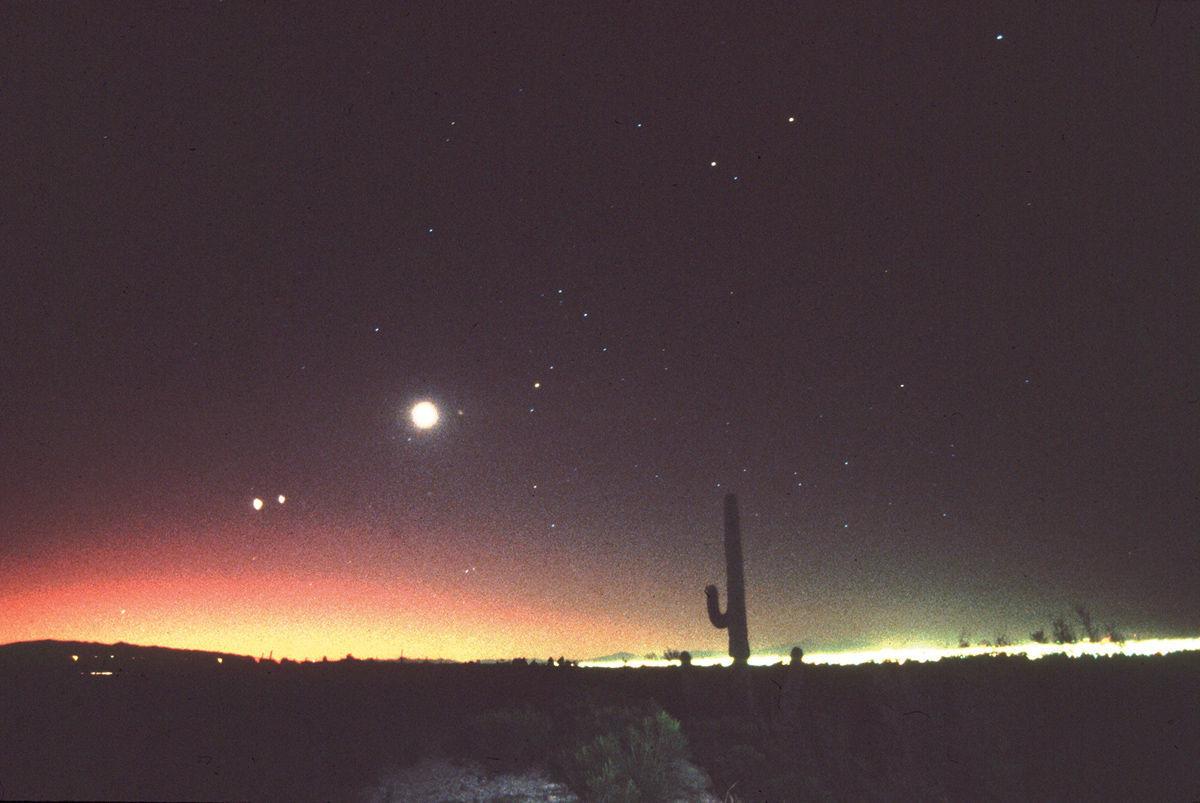For about the next month, all five visible planets will appear before dawn — a sight last viewed in 2005.
From about 6:25 a.m. until 6:50 a.m. on Saturday, Jan. 23, you will be able to see all of the visible planets and the nearly full moon at the same time spanning 170 degrees from Mercury just risen in the east to the moon just setting in the west. To best see this you will need a clear sky and unobstructed eastern and western horizons.
At 6:40 a.m. Mercury will be 5 degrees above the southeastern horizon.
Next up from Mercury is ever-brilliant Venus 15 degrees above the horizon. Above Venus is Saturn not far to the east (left) of the bright star Antares in Scorpius the Scorpion.
Mars is next almost directly south, 44 degrees above the southern horizon. Bright Jupiter will be evident high in the southwest, and the moon will be close to setting in the west.
People are also reading…
By Monday, Jan. 25, the span of planets plus the moon will be easier to see as Mercury gets higher in the pre-dawn sky on a daily basis.
This lineup of the planets and the moon in the morning sky is of no specific astronomical importance but certainly worth arising on a cold winter morning to see.











